Leaving our Abruzzo relatives behind on October 31 we drove to our final Italian destination, the eternal city of Rome. We'd booked a hotel very close to the Vatican, and on the night of our arrival wandered over to St. Peter's Square after a delicious dinner at a restaurant around the corner from our hotel.
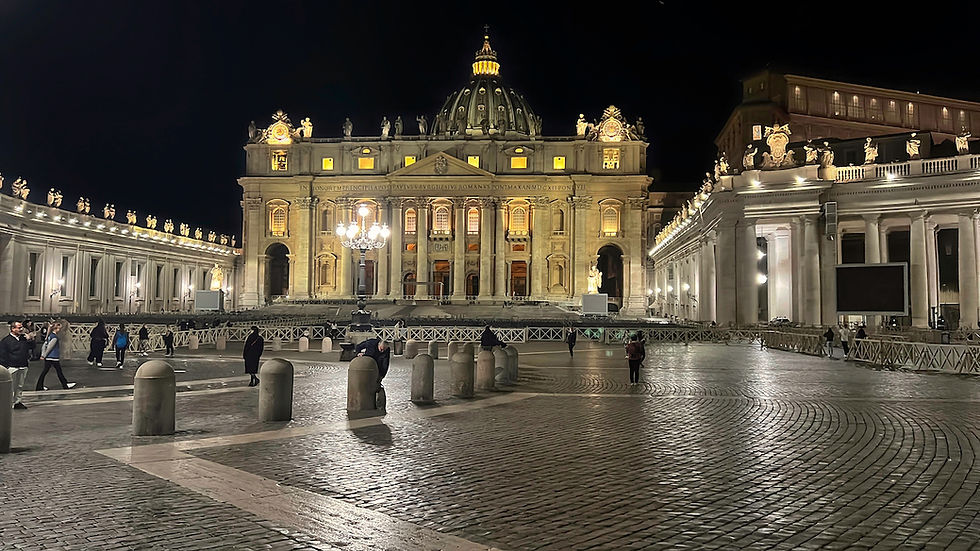
The next day was All Saints Day, and we awoke to find the streets around us closed off. "Ahhh," we said to ourselves, "This must be because people will be streaming to St. Peter's to see the Pope celebrate Mass." As we found out, things were actually blocked because they were running a 10K footrace in the area.
We wanted to see some sights new to us (as well as revisit some old standards), and so signed up for a tour of the Castel Sant'Angelo, a round fortress sitting on the Tiber River with a storied life.
It was first built during Imperial times as a mausoleum for emperors and other high status Romans, looking like this model below:

Because it was a mausoleum, it was built outside the walls of the ancient city, which sat on the other side of the Tiber. When the Empire fell, much of the outer materials were removed by local Romans and re-used (this happened to most ancient structures in Rome, including the Colosseum), exposing the underlying brick and stone surfaces, leaving the structure looking like this.

The Castel's strategic advantages were rediscovered by the Catholic church, which added upper defenses, a gate guarding the only bridge across the Tiber, and an escape route from the Vatican that could be used when popes were under siege (the popes held considerable political as well as spiritual power during several centuries).
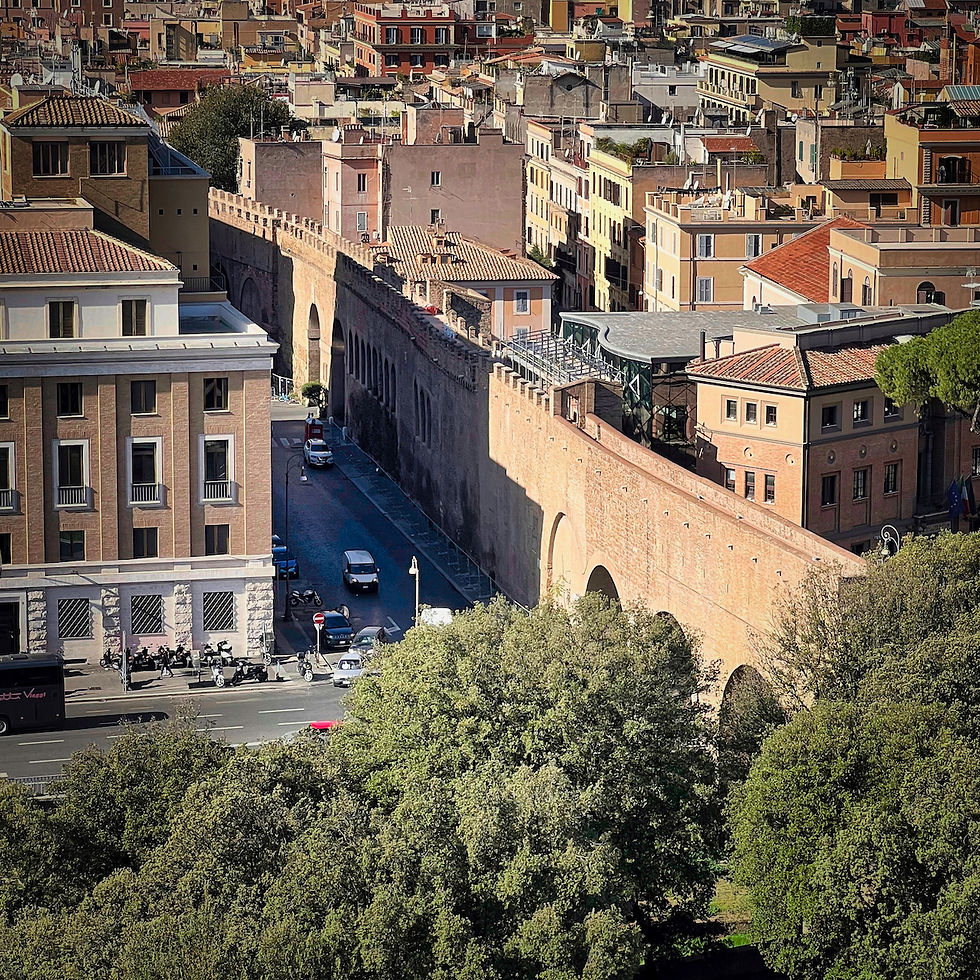
There are great views of Rome from a terrace on the Castel's top.
After our tour ended, we decided to walk across the river to see some of the old city. We went by the Pantheon, but the lines were very long so we decided to postpone a visit there. Along the sides of the building, we could see the difference in level between the ancient streets of Rome and the modern ones.

Our guide at the Castel Sant'Angelo had recommended a visit to a relatively unknown ancient site called the Terme di Caracalla, an ancient Roman bath complex. Along the way, we walked along a huge field that we discovered were the remains of the Circus Maximus, the site of many chariot races. Like other ancient buildings, once abandoned it was recycled so little of the original structure remains.

The Caracalla baths turned out to be a huge complex, built in the 3rd Century A.D., that could accommodate up to 6,000 visitors at a time. It was easily the length of three football fields and 3 stories high. It held several olympi- sized swimming pools, exercise rooms, massage facilities, restaurants, and, of course, brothels. Romans of any social class could use it and spend an entire day there. With only the collossal ruins remaining, a model of the original design provided a sense of its original grandeur.
Although it's a ruin, we could still see some of the original mosaic flooring, the sites of some large swimming pools, graceful towering archways and even some decorative marble accents and delicate frescos on the walls.
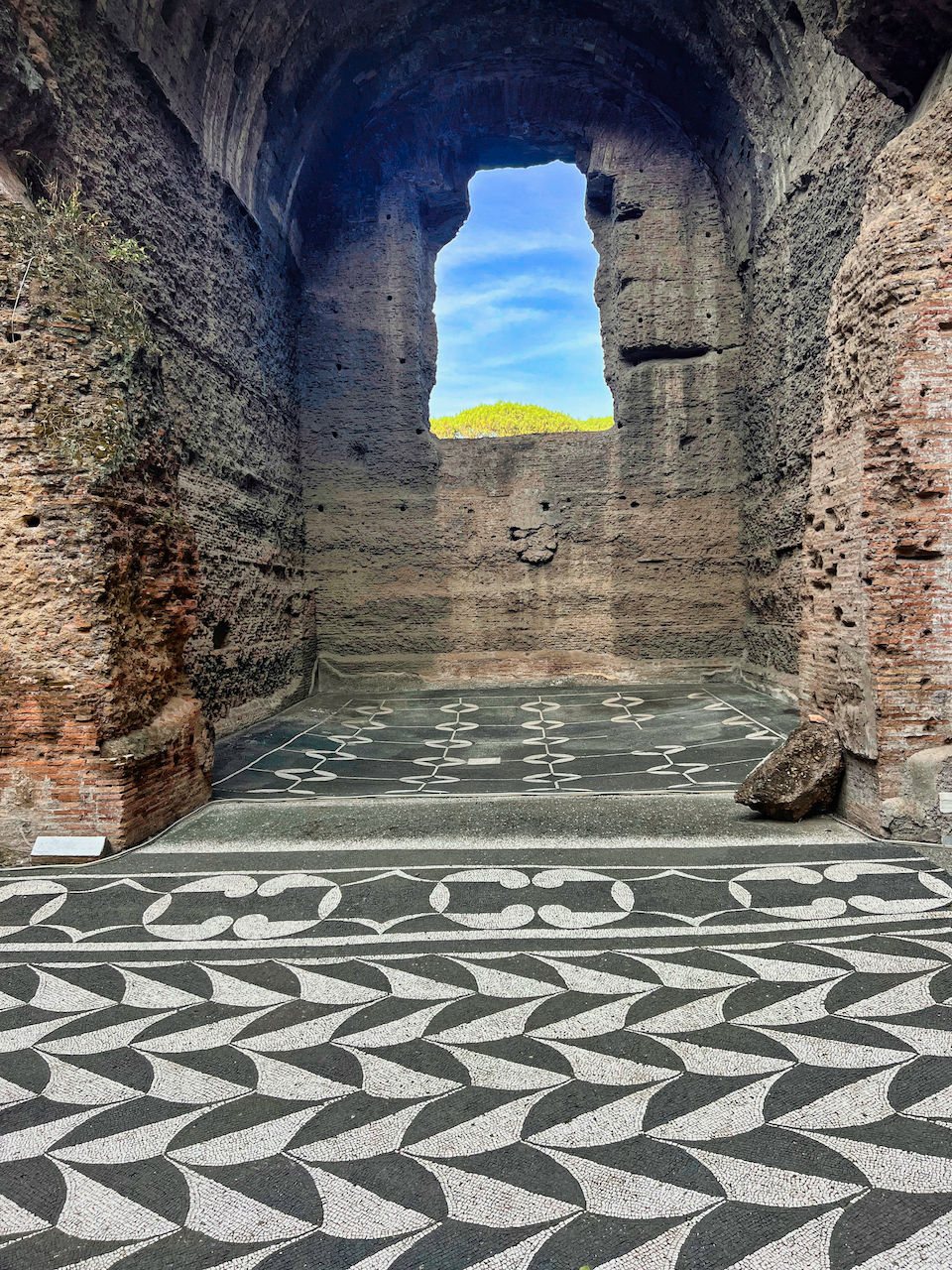
The next day was our Vatican day. In the morning, we visited St. Peter's Basilica. It's such a huge building that it never fails to impress, and we took in the splendor around us.






Then it was back outside and off to the entrance to the Vatican Museums. We'd been there a couple of times before and it can be overwhelming, so this time we signed up for a guided walking tour which made taking in the various works more manageable.

Our guide told us that an the head from a greater-than-life-sized statue of the Emperor Augustus might have been used by Michelangelo as a model for the face of his David, and we could certainly seem some resemblance.

Over the millennia, various Popes have amassed huge quantities of ancient Greek and Roman statues. The Vatican has the world's largest collection.

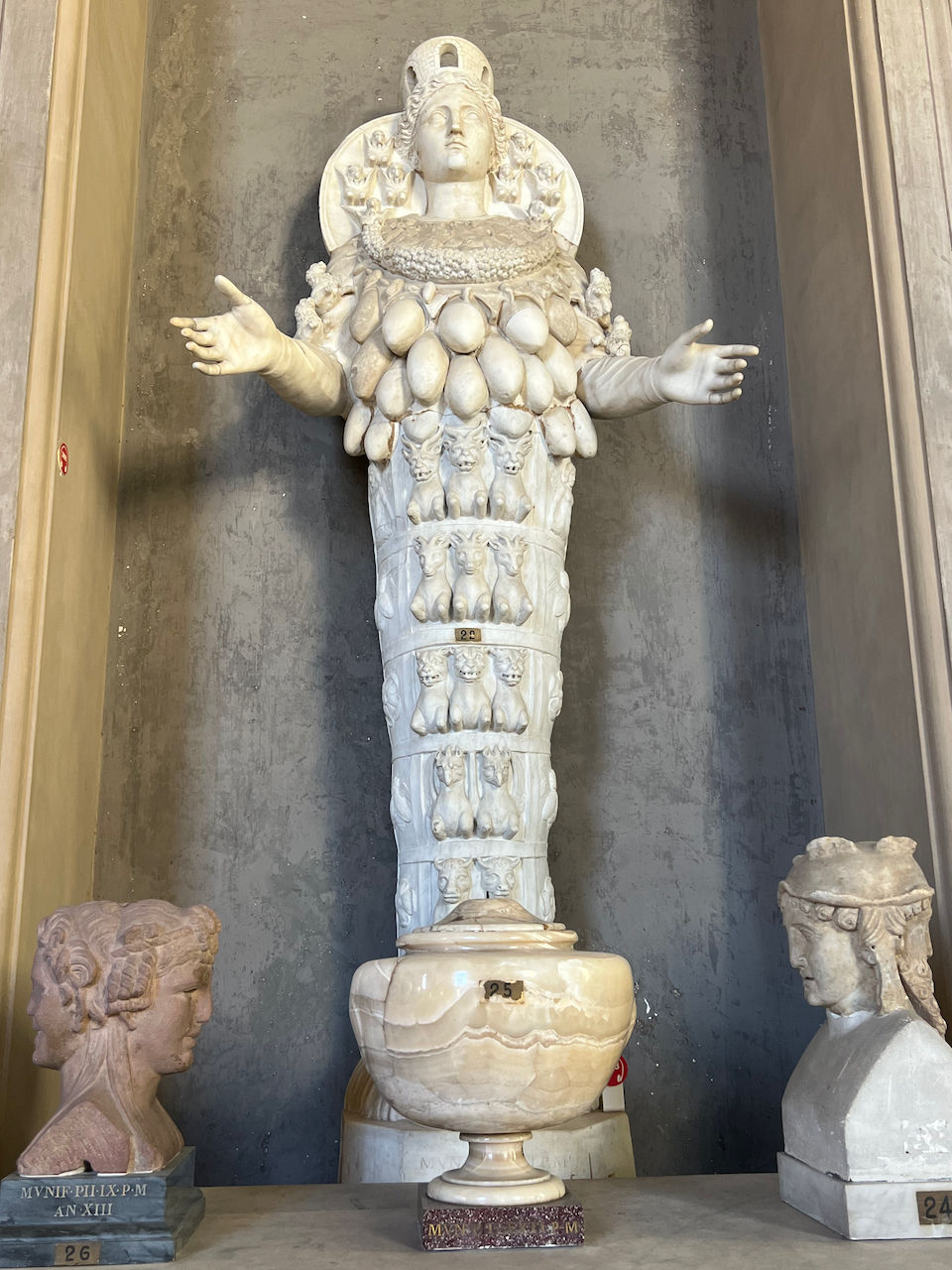

In the giant map hallway that lines part of the museum we found both Scontrone and Castel di Sangro, which we'd visited the previous week in Abruzzo.
Toward the end of the tour, we passed through galleries showcasing some of the Vatican Museum's collections of recent works.

Finally, on to the Sistine Chapel. It has been crowded every time we've visited in the past, and seemed even more so this time. We first visited the Sistine Chapel on our honeymoon in 1984, before its last major cleaning, and had seen it again after the cleaning. The before/after difference still amazes us. Fortunately, we found a spot to sit on the side of the chapel where we could take our time soaking inMichelangelo's ceiling and Last Judgement, and also take a surreptitious photo.
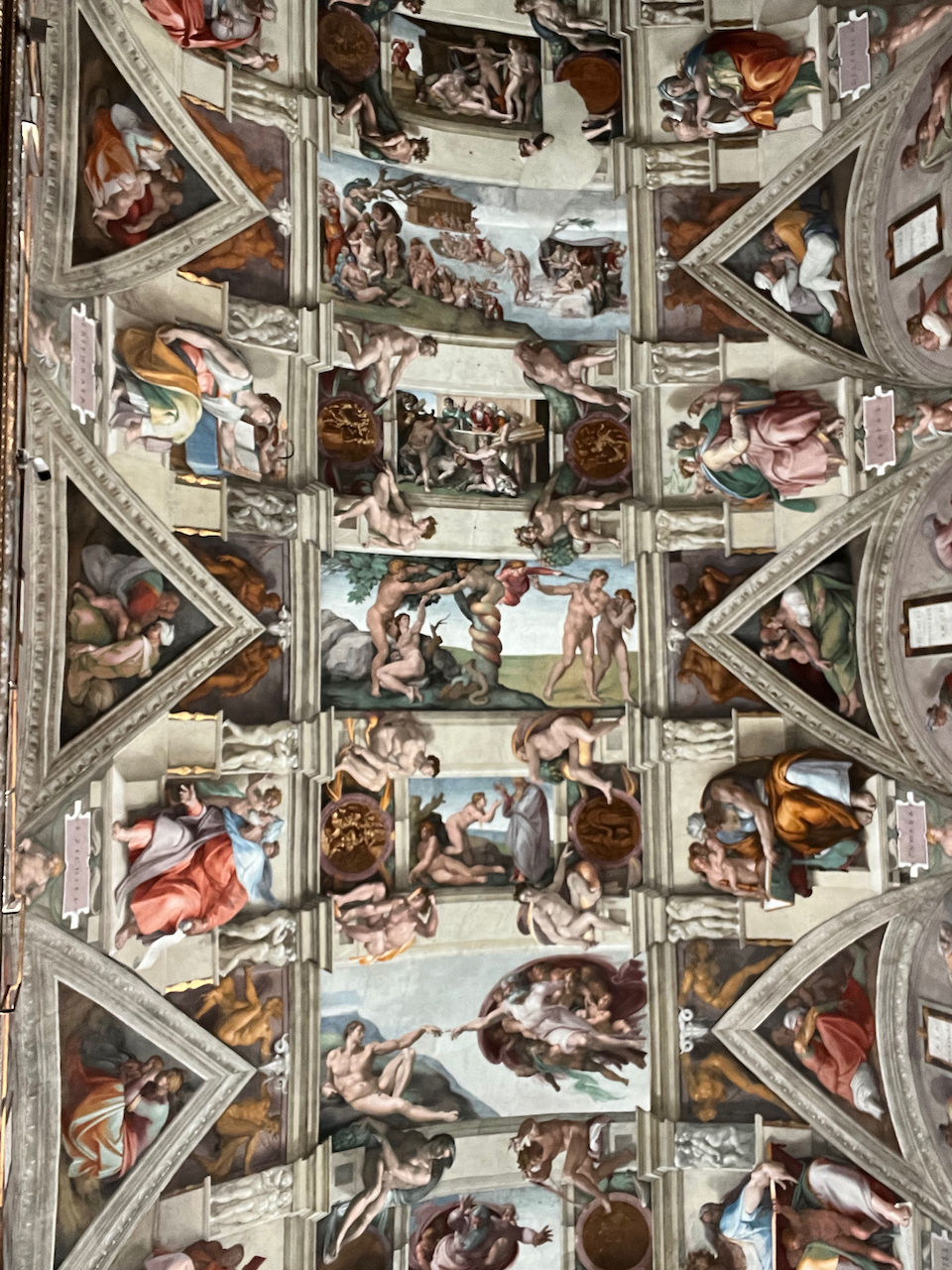
On our way to the Vatican Museum exit (and several gift shops along the way), we came through a large new exhibit of works from indigenous peoples that had been gifted Popes when visiting remote parts of the world.
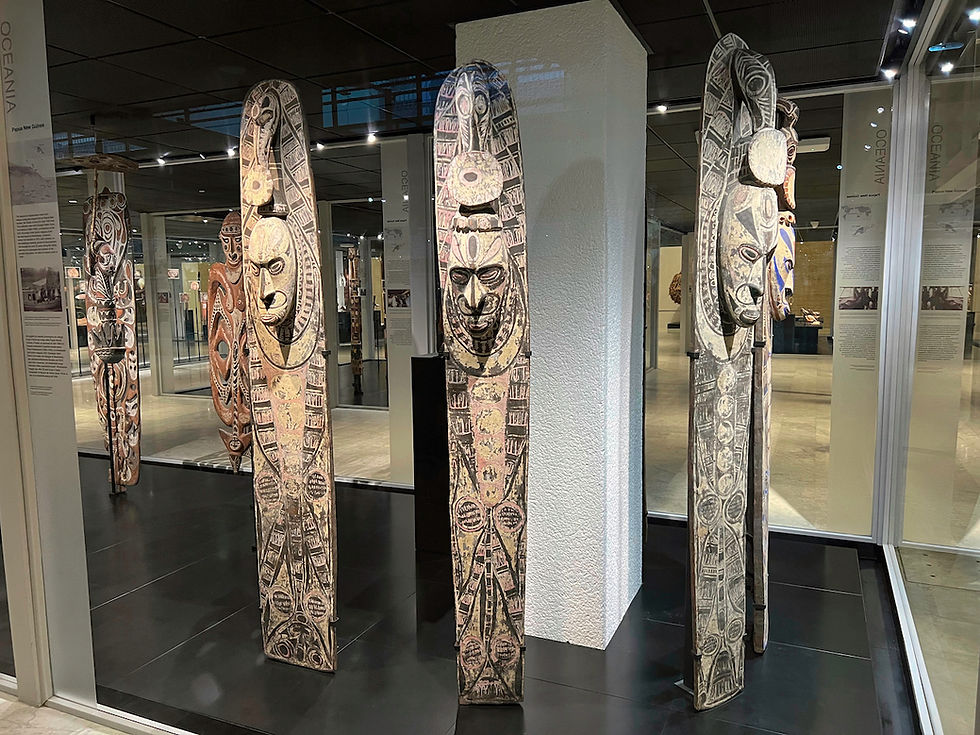
Our last full day in downtown Rome we took the bus to see a couple spots we'd visited before. The first was the Pantheon, built in 126 AD. It is, by far, the ancient Roman structure in the best shape, probably because it was rededicated as a Catholic church in 609 AD. Its huge dome (still the largest unreinforced concrete dome in the world) and its large open oculus are always amazing to behold. We were able to look up through the roof of a side altar to see that the dome is actually a double structure.
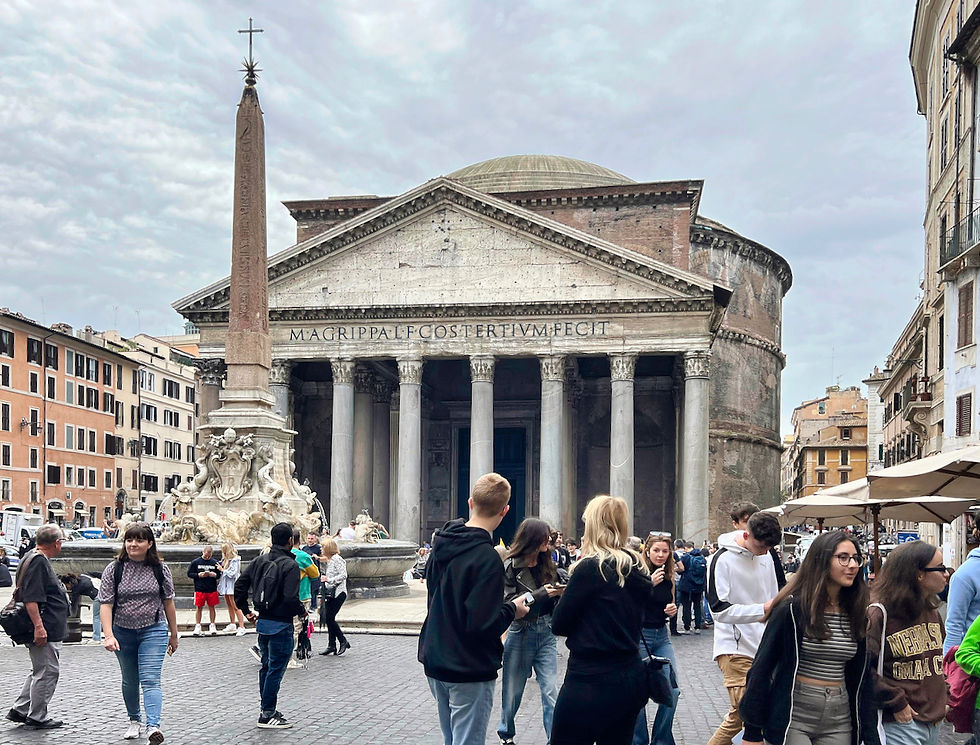
We then walked to the Colosseum and the Roman Forum, but tickets to tour them were sold out for the day, so we just goggled at them from the outside.
We returned to the hotel to retrieve our car, and then drove to the Roman suburb of Ostia to an AirBnB rental. We picked Ostia both because of its proximity to the airport, and also because we wanted to visit the Ostia Antica archeological site. In ancient Rome, Ostia served as Rome's main port on the Mediterranean.
After settling in, we walked downtown where we could see the Castel of Julius II, built in the 15th century, and ate a traditional Roman dinner at a local restaurant. There was a beautiful sunset.
We spent several hours touring the archeological site on November 4th, our last full day in Italy. The site is quite large - perhaps not as big as Pompeii but approaching it. It's much less well known, and was fairly empty when we visited. Scholars estimate only about 50% of it has been unearthed during the last 100 years.
The ancient port town of Ostia had temples, baths, and a theater, remains of which can still be seen today. There were also many warehouses, as you would expect in a port. We also saw the remains of an industrial-scale grain milling operation. It even had a Jewish synagogue dating to the 1st century A.D., making it the oldest synagogue found in Europe.
Like many Roman buildings, brick was the underlying construction medium covered with marble facing (little of which remains today, but there are also marble pieces and statues lying around). Some mosaic floors remain.
One fascinating ruin was a wine shop - with pictures on the walls indicating what they sold. It even had a "walk-up" window!
We stayed in the ruins till closing time.
The next morning, we put our bags in the car, drove it to Leonardo da Vince airport and dropped it off without incident. We did not have any issues in getting to our flight to Frankfurt, and it left on time. On the way, we had clear skies and could see the entire Venetian lagoon...

...and some of the Dolomites rising from a valley with the snow-covered Austrian Alps beyond them.

Our connecting time in Frankfurt was short but we made it to our final Lufthansa flight before they closed the doors, and it took off on time. We had a bumpy but otherwise incident-free flight to Dulles Airport.

Thus ended our five-week Italian sojourn. It was a wonderful trip, although we've realized our future limit for a trip like this where we're changing hotels is probably about four weeks.
As we hinted before, we want to share more photos from our Dolomites photography workshop, so look for another blog post soon.











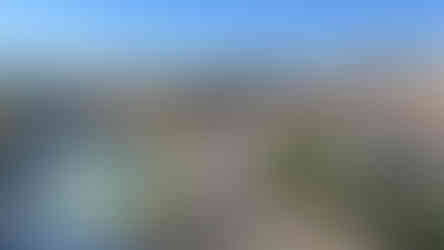






























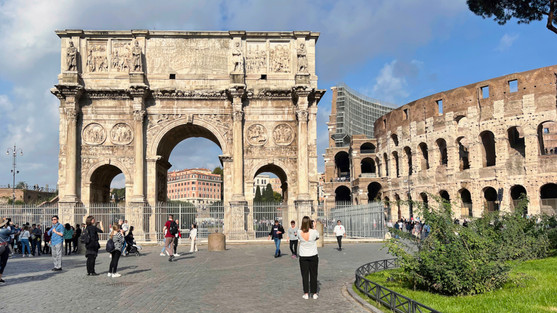

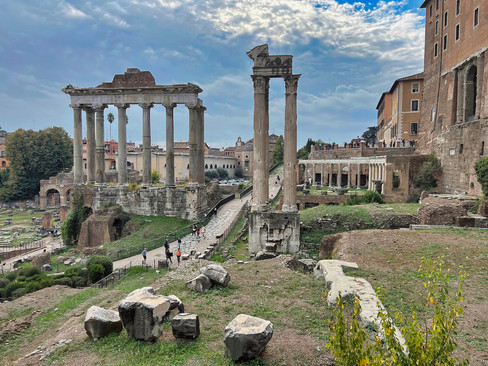






























Bình luận